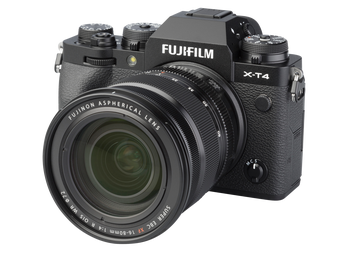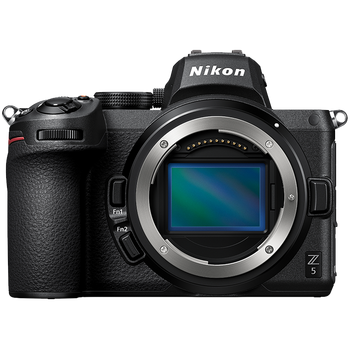- Compact and lightweight
- Excellent image quality
- Stabilized video
- User-friendly controls
- High-speed shooting
- Affordable full-frame option
- High-quality images
- Stabilized photos and videos
- User-friendly design
- Lightweight and portable
- Limited battery life
- APS-C sensor may not suit all
- Limited continuous shooting speed
- Crop in 4K video
Fujifilm X-T4 vs Nikon Z5
The world of photography has witnessed a significant shift towards mirrorless cameras, offering unparalleled flexibility, portability, and image quality. Two notable contenders in this realm are the Fujifilm X-T4 and the Nikon Z5. Both cameras have garnered attention for their exceptional features, but which one reigns supreme? In this comparison, we'll delve into the intricacies of these two mirrorless cameras to help you make an informed decision.
Sensor and Image Quality
The Fujifilm X-T4 boasts a 26.1-megapixel APS-C X-Trans CMOS 4 sensor, while the Nikon Z5 features a 24.3-megapixel full-frame CMOS sensor. Although the Nikon Z5 has a slightly lower megapixel count, its full-frame sensor provides better low-light performance and shallower depth of field. The Fujifilm X-T4, on the other hand, excels in terms of color accuracy and dynamic range, thanks to its unique X-Trans filter array.
In real-world testing, both cameras deliver exceptional image quality, but the Nikon Z5's full-frame sensor gives it a slight edge in low-light conditions. However, the Fujifilm X-T4's superior color science and noise reduction make it an excellent choice for photographers who prioritize vibrant, accurate colors.
Autofocus and Speed
The Fujifilm X-T4 features a hybrid autofocus system with 425 phase-detection points, covering nearly the entire sensor area. This allows for fast and accurate subject tracking, making it ideal for sports, wildlife, and action photography. The Nikon Z5, on the other hand, employs a 273-point phase-detection AF system, which, although not as extensive as the X-T4's, still provides reliable performance.
In terms of burst mode, the Fujifilm X-T4 can shoot up to 15 frames per second (fps) with the mechanical shutter, while the Nikon Z5 tops out at 4.5 fps. However, the Z5's electronic shutter allows for faster bursts, reaching up to 30 fps in certain modes.
Video Capabilities
Both cameras are capable of producing high-quality video, but the Fujifilm X-T4 has a clear advantage in this department. It can record 4K video at up to 60p, with 10-bit 4:2:2 output and F-Log recording. The Nikon Z5, while still capable of 4K video, is limited to 30p and lacks the X-T4's advanced video features.
Ergonomics and Build Quality
The Fujifilm X-T4 and Nikon Z5 both feature weather-sealed bodies, with the X-T4 boasting a more compact and lightweight design. The Nikon Z5, on the other hand, has a slightly larger and heavier build, but its ergonomic grip and intuitive controls make it comfortable to hold and operate.
Lens Ecosystem
The Fujifilm X-T4 has access to a vast array of XF lenses, including some exceptional prime and zoom options. The Nikon Z5, as part of the newer Z-series system, has a more limited lens selection, but Nikon's commitment to expanding the lineup is evident. The Z5 also benefits from the FTZ adapter, which allows for seamless integration with existing F-mount lenses.
Conclusion
In the world of mirrorless cameras, both the Fujifilm X-T4 and Nikon Z5 offer exceptional performance and features. While the Nikon Z5's full-frame sensor provides better low-light capabilities, the Fujifilm X-T4's superior color science, faster autofocus, and advanced video features make it a more versatile and appealing option for many photographers.
Ultimately, the choice between these two cameras depends on your specific needs and preferences. If you prioritize low-light performance and a full-frame sensor, the Nikon Z5 may be the better choice. However, if you value exceptional color accuracy, fast autofocus, and advanced video capabilities, the Fujifilm X-T4 is an excellent option.
As mirrorless cameras continue to evolve, it's exciting to see manufacturers like Fujifilm and Nikon pushing the boundaries of innovation and performance. Whether you choose the X-T4 or the Z5, you can rest assured that you're investing in a high-quality camera that will help you capture stunning images and videos for years to come.


















